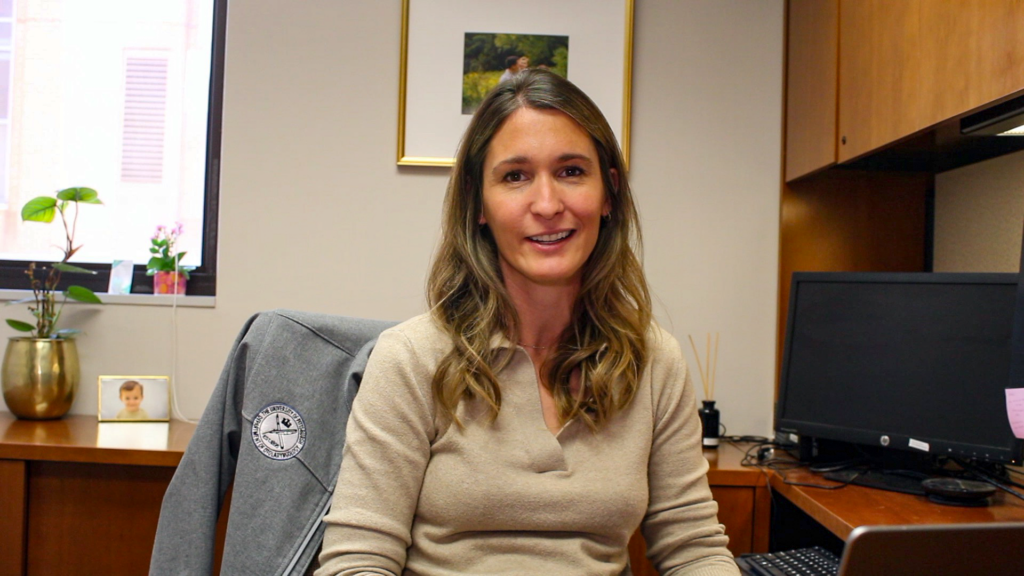S+S, Fall 2024
For patients with long-standing facial paralysis (greater than two years’ duration), the only option for restoring the ability to smile is with a procedure known as a “gracilis free muscle transfer.” However, a small subset of patients go on to develop “resting oral commissure lateralization.” This is when the corner of the mouth is pulled unnaturally at rest, which can be unsightly and distressing for the patient. The risk factors for this phenomenon are poorly understood.
Dr. Christina M. Yver, MD, MBA, Assistant Professor of Otolaryngology-Head & Neck Surgery and Director of the UPMC Facial Nerve Center is one of three authors on a study published in the August 2024 issue of Plastic and Reconstructive Surgery, a peer-reviewed medical journal that is the official publication of the American Society of Plastic Surgeons. The article is titled, “Muscle foreshortening after free gracilis transfer for smile: Where, when, why?”
Gracilis free muscle transfer involves borrowing a small slip of muscle from the inner thigh and transplanting it into the face to replicate the function of smile muscles. In order for it to be successful, the transplanted muscle has to be hooked up to a blood supply as well as a donor nerve in the face. This allows the muscle to contract, creating a smile.
“Our study is the first of its kind to review over 400 patients who underwent gracilis free muscle transfer, identify those with subsequent oral commissure lateralization, and examine various potential risk factors for this phenomenon,” Dr. Yver said. “We found that the choice of donor nerve used to activate the muscle seems to be the biggest risk factor for oral commissure lateralization, with more robust donor nerves resulting in greater risk.”
Other risk factors include a history of radiation to the face or concurrent use of fascia lata to help support the face at rest.
“A better understanding of these risk factors will allow us to better counsel patients pre-operatively, and to make more informed clinical decisions on how to achieve the best possible smile outcome while minimizing the risk of oral commissure lateralization post-operatively,” Dr. Yver said.
To make an appointment with Dr. Yver, call 412-621-0123.
